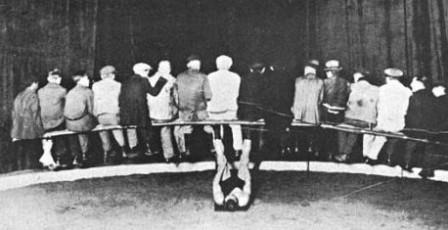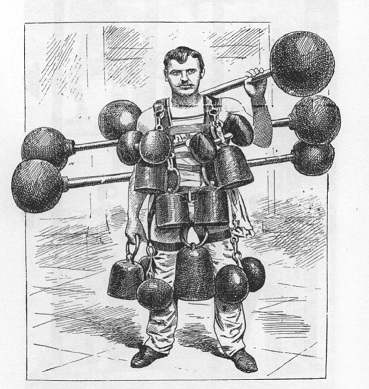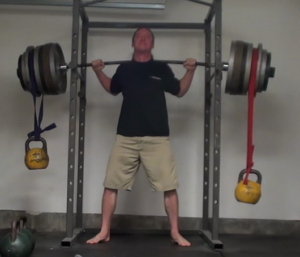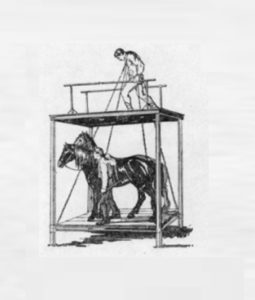Weight supports are different from partials in that the goal is to hold a weight in a static position. While some form of partial movement may need to be used in order get the weight in place, the goal is to hold it, not move it like it is in a partial.
Typically massive weights are held in a support. Below is Arthur Saxon supporting 16 people on a plank with his legs.

Arthur Saxon supports big weight with his legs
The reason huge weights can be used in supports is because the weight is made to be loaded on the bone structure of the body versus the muscles. The bones are actually very strong (and can be made stronger through proper training). While the muscles, tendons and ligaments will be working to support the bones, the ultimate limiter can become the bones themselves. More details on Tendon, Ligament and Bone training here.
This video shows legendary strongman Valentin Dikul supporting a car over his shoulders.
My personal best in weight support was with a wrestler’s bridge, handling 1003 lbs., just over half a ton.
While many people may not understand the benefits of doing this type of training, there are many.
This kind of strength is exactly opposite of osteoporosis. Doctors say that this is because of hormonal changes and lack of calcium and vitamin D. While that may all be true, the answer is in the signal you’re giving your body through weight bearing exercise. Yes, any weight bearing exercise helps. But this takes it to another level. Don’t expect to see any scientific studies validating this anytime soon though. It’s too far outside the conventional.
Please do ease into this kind of training slowly and smartly. It would definitely suck to have your bones fail.
Of course, supports do not work you muscles the same way that a full range of motion exercise does. But it does place bigger demands on the bones.
Plus if you want to show your strength, supports can be a great way to do it.
Here’s a few more examples.

An interesting combination support

A standing support done in training.

Why lift weights when you can lift horses?
Want to become a strongman and do weight supports. My Strengthen Your Structure course covers a lot more on this subject.
